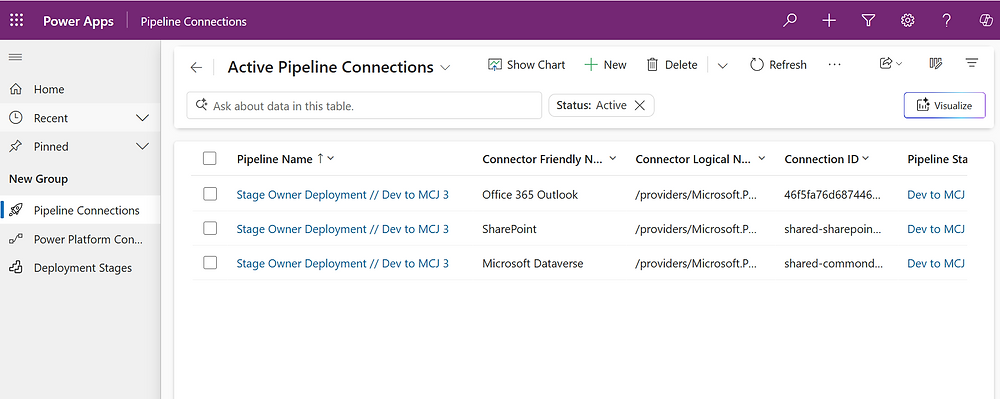Now Reading: A closer look at Hosted Exchange from Microsoft
-
01
A closer look at Hosted Exchange from Microsoft
A closer look at Hosted Exchange from Microsoft
 “Email is Email!”. This is what another Microsoft partner suggested to me, that I should say when presenting Office 365 to potential customers. He went on to say “A customer is not going to make the move to Office 365 for email, it will be for all of the other capabilities”. Well, he was absolutely correct. Using his sound advice, Forceworks has brought thousands of business users to the Office 365 platform. But I continued to have this nagging feeling, that even though users are coming on board at a rapid clip, I was short-changing Exchange Online in the process.
“Email is Email!”. This is what another Microsoft partner suggested to me, that I should say when presenting Office 365 to potential customers. He went on to say “A customer is not going to make the move to Office 365 for email, it will be for all of the other capabilities”. Well, he was absolutely correct. Using his sound advice, Forceworks has brought thousands of business users to the Office 365 platform. But I continued to have this nagging feeling, that even though users are coming on board at a rapid clip, I was short-changing Exchange Online in the process.
While it is true, that for most small and medium-sized businesses, email is simply… well, email, but for some, the differences are stark and should be known. So I decided to attempt flesh out exactly what Hosted Exchange is bringing to the table. In other words, Email is not Email, not even close. No more than a Car is a Car or a House is a House.
Of course, this conversation starts with where you start, and those points are vastly different. For most of our customers, Hosted Exchange (or Exchange Online as it is known) comes in as part of their Office 365 subscription. It is just a piece of a package that may also include Lync Online, SharePoint Online, Office, Dynamics CRM Online, Project Pro Online, Office Web Apps, etc. While together these make an undeniably superior solution to whatever most clients may be using today, Exchange Online alone is worth the price.
Business users today have their mail served from a wide array of sources, all with varying degrees of capability, performance and security. POP Accounts (thankfully fading away), webmail, Gmail, Yahoo Mail, proprietary vendor email systems, on premise email systems, and increasingly over the last decade, Exchange hosted by a provider. Of these options On-Premise Exchange has long been considered by IT the best choice for those who could afford the infrastructure and administration. The second best IT choice was a Hosted Exchange provider, think Rackspace, Intermedia, Sherweb and hundreds of others. Suffice it to say, if you are not using Exchange, either on-premise or hosted, most IT professionals would agree that you are using something sub-par, on multiple levels. So really there are two camps, Exchange Users, and everybody else.
Microsoft, of course, “owns” Exchange. They wrote it and launched it in the early 90s, and have been building on it ever since. Microsoft offered this software initially to businesses for their own use and later also to other businesses who would “build a business” by hosting the software on their own servers and offering Exchange Email service to business users. In April of 2009 Microsoft launched Business Productivity Online Services (BPOS) as their first foray into offering Exchange as a hosted service themselves, but it was not until the re-brand and re-launch as Office 365 that users started to really take notice. And not just users, but the other hosted Exchange providers as well… and they were not too happy. Maybe if Microsoft had priced their service above the cost of the providers reselling their product things would have gone smoother, but in almost every case, Microsoft was cheaper.
 From a provider perspective, Microsoft was, and is, directly competing with them, but without the provider’s cost burden of licensing the Exchange software. It is an interesting situation, paying your competitor to use their software to compete against them. It might have been surmountable, had Microsoft not gone and built all these state-of-the-art data centers. Microsoft did not build these data centers to cause problems for the Exchange Hosting providers, they built them for their entire cloud strategy which is much more encompassing than just email, but the result is the same. No other email provider, of any type, comes close to what Microsoft has behind Exchange Online. For email alone, they could never justify the cost. From a user perspective, they can get Exchange from the owner of the software, running on superior data centers for a lower cost… Darwinian indeed.
From a provider perspective, Microsoft was, and is, directly competing with them, but without the provider’s cost burden of licensing the Exchange software. It is an interesting situation, paying your competitor to use their software to compete against them. It might have been surmountable, had Microsoft not gone and built all these state-of-the-art data centers. Microsoft did not build these data centers to cause problems for the Exchange Hosting providers, they built them for their entire cloud strategy which is much more encompassing than just email, but the result is the same. No other email provider, of any type, comes close to what Microsoft has behind Exchange Online. For email alone, they could never justify the cost. From a user perspective, they can get Exchange from the owner of the software, running on superior data centers for a lower cost… Darwinian indeed.
So let’s get back to on-premise exchange otherwise known as Exchange Server. By the way, Exchange Server is the same software that the third-party hosting companies have. Microsoft’s Exchange Online, while also running Exchange Server 2013 has quite a few capabilities and features that are not available at all, or at least delayed for the on-premise version, and therefore the hosting provider’s versions. So if you are an IT Manager with on-premise Exchange Server, you are probably smiling that your organization was not involved in the hosting issues described above.
While the battle rages on, you sit comfortably on the sideline, literally Master of your Domain. We hear it all the time, “We have on-premise Exchange, it has all we need and never goes down”. On the first part “has all we need” you are either oblivious or in denial, and on the second part “never goes down” you are lying. I have written at length about IT’s fears of loss of control, or worse loss of a job. The more I talk about the breadth of solutions that Microsoft has in their cloud stack, the greater this fear becomes. So let’s forget about all that and just talk Email.
The typical midsized business with an actual IT department usually has a rack of servers, either literally on the premises or at a private data center or both. Among these servers, many workloads are taking place beyond just email: file shares, accounting software, ERP, anti-virus, too many really to list. But in looking at the email function in particular, it is impossible for IT to be heroes. Email is assumed, like air conditioning or electricity, nobody even thinks about it unless it goes down. When this happens, IT bubbles up from being out of the users’ minds, to a bunch of freaking idiots. Your heroic efforts to restore service are neither appreciated, or even thought about two seconds later.
From an IT perspective, Email presents nothing but risk to your department and its internal reputation. And for what? The perception of control? The impression that you have a better ability to keep it up than Microsoft? I would compare Microsoft’s uptime record for Exchange Online, to any IT department in any midsized business. So even if there were no other reasons, this alone should be reason enough to get out from under email, but there are other reasons.
 Let’s take a quick look at just one important feature, anti-spam. I am going to make the assumption that you not only have Exchange Server, but you also have Forefront protection, which I know many of you do not. Exchange Online Protection (EOP) is the next version of Forefront Online Protection for Exchange (FOPE). EOP anti-spam protection features are included in Exchange Online. The following are benefits of using Exchange anti-spam protection in the cloud (Microsoft Exchange Online or Microsoft Exchange Online Protection) as opposed to Microsoft Exchange Server 2013, which has most of the same built-in anti-spam capabilities as Microsoft Exchange Server 2010:
Let’s take a quick look at just one important feature, anti-spam. I am going to make the assumption that you not only have Exchange Server, but you also have Forefront protection, which I know many of you do not. Exchange Online Protection (EOP) is the next version of Forefront Online Protection for Exchange (FOPE). EOP anti-spam protection features are included in Exchange Online. The following are benefits of using Exchange anti-spam protection in the cloud (Microsoft Exchange Online or Microsoft Exchange Online Protection) as opposed to Microsoft Exchange Server 2013, which has most of the same built-in anti-spam capabilities as Microsoft Exchange Server 2010:
- More control and easier configuration Administrators can use the Exchange Administration Center (EAC) web-based management console in order to customize spam filtering settings so that they best meet the needs of your organization. There is no anti-spam user interface in Exchange Server 2013.
- Stronger connection filtering In Exchange 2013, connection filtering IP Allow lists and IP Block lists are available only if you install an Exchange 2010 or Exchange 2007 Edge Transport server in your perimeter network. In the cloud, you can choose to skip spam filtering on email messages sent from trusted senders (gathered from various third-party sources), ensuring that these messages are not mistakenly marked as spam. Also, the hosted filtering service uses Microsoft’s own block lists and lists aggregated from vendors to provide greater IP-level filtering.
- Stronger content filtering You can easily configure your content filter policy to:
- Filter messages written in specific languages.
- Filter messages sent from specific countries or regions.
- Mark bulk email messages (such as advertisements and marketing emails) as spam.
- Search for attributes in a message and act upon the message if it matches a specific advanced spam option attribute. If you are concerned about phishing, some of these options offer a combination of Sender ID and SPF technologies to authenticate and verify that messages are not spoofed.
In addition to the above content filter options that you can configure in the EAC, the hosted filtering service uses additional URL lists to block suspicious messages that contain specific URLs within their message body.
- Quicker updates Spam updates are propagated more quickly across the network. In Exchange Server 2013 updates occur two times per month, whereas the service is updated multiple times per hour.
- Outbound filtering Outbound spam filtering is always enabled if you use the hosted service for sending outbound email, thereby protecting organizations using the service and their intended recipients.
This is only one aspect of email, anti-spam, but there are many others. On our Exchange Online product page we have a complete breakdown of the differences between Exchange Server 2013 and Exchange Online. Note that the differences are even more stark if you are on an earlier version of Exchange Server, but I am not showing all of those.
When is the best time to make a move?
This is a huge question with different answers depending on your situation. It also has a great deal to do with how much value you place on different feature and capability gains, which also varies from business to business. There is also a migration cost to consider. If you are currently on one of the other hosted Exchange providers it is fairly easy to do a cost/benefit analysis and make a decision. The challenge sometimes is getting past the misinformation that their desperate sales staff will spew as they try to keep yet another client from leaving their over-priced solution.
If you have an on-premise Exchange Server the trigger points are much different. We often find companies making the move when either hardware or software upgrades are required in order to avoid that expense. This is a very pragmatic approach that completely discounts the additional value received, but the C-Suite has usually looked at IT as an expense to be managed rather than a value creator. Sometimes a move is triggered by a failure of something that creates downtime, or spam issues. This is not the best time as undue pressure may be placed upon IT, but the fact is that many migrations are reactive rather than proactive.
I encourage you to look into Exchange Online… thoroughly and objectively, then contact us to discuss your situation, we are here to help.
The post A closer look at Hosted Exchange from Microsoft first appeared on Steve Mordue MVP.















